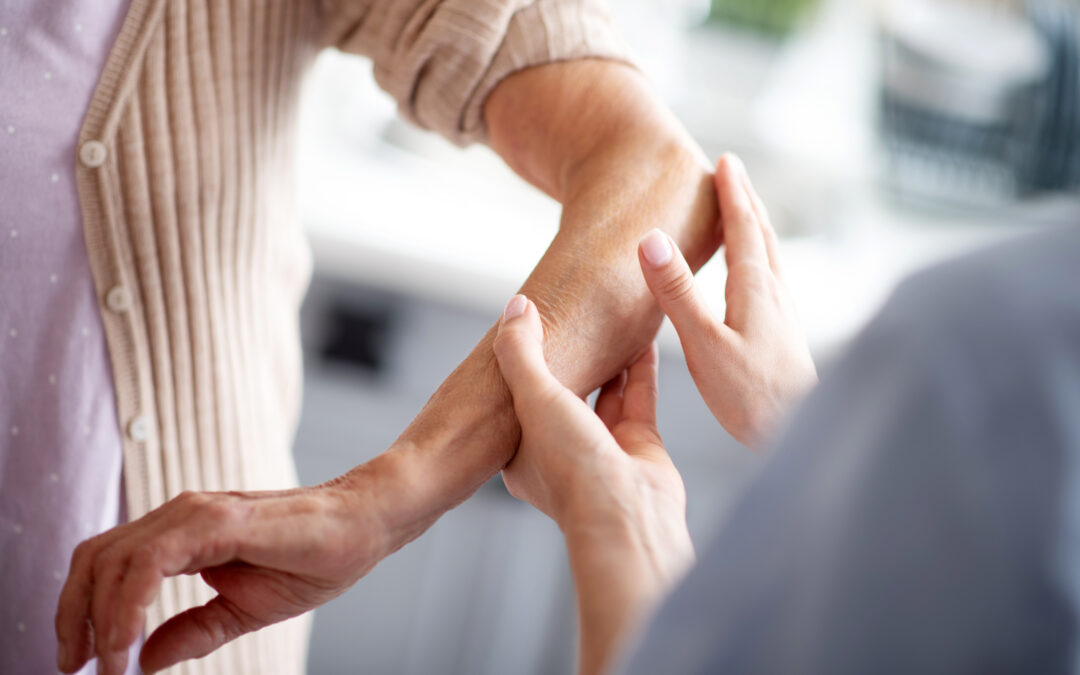Contents
Your elbow is a complex joint where three bones meet. These are the humerus (upper arm bone), the radius (one of the two forearm bones) and the ulna (the other forearm bone). These bones are connected by ligaments and surrounded by muscles. These ligaments and muscles allow the elbow to bend, straighten and rotate. Smooth cartilage provides cushion in the joint to help ensure frictionless movement. Sometimes, tiny outgrowths of bone called bone spurs can develop. Bone spurs, or osteophytes, are small, bony projections that can form on the edges of bones. They can irritate the surrounding tissue and cause pain, stiffness, tingling and limited movement. Bone spurs in the elbow can be caused by:
- Osteoarthritis.
- Family history.
- Injury and overuse.
- Inflammatory conditions.
- Joint wear.
An advantageous treatment to help with bone spurs in the elbow is physical therapy.
Physical therapy treatments for elbow bone spurs
If you’re experiencing pain from a bone spur in your elbow, a physical therapist can be your new hero. A physical therapist is a highly skilled movement specialist who can assess your individual situation. During this assessment, they can pinpoint the location and severity of the bone spur and then create a personalized treatment plan to address your discomfort and improve joint function. Some physical therapy techniques that can be beneficial include:
- Manual therapy — Manual therapy is an umbrella term that encompasses hands-on techniques. Soft tissue manipulation uses targeted movements like kneading and friction. These movements can help loosen tight muscles and improve flexibility around the elbow joint. Joint mobilization is a technique that aims to help coax your elbow into better mobility and less stiffness. It can help boost joint fluid circulation, ease compression and enhance tissue relaxation. These manual therapy techniques can help reduce pressure on the bone spur and alleviate pain.
- Stretching exercises — Tight muscles can pull on your elbow joint and make your pain worse. Your physical therapist may recommend specific stretching exercises. These exercises target these tight muscles to help improve the flexibility and range of motion in your elbow.
- Strengthening exercises — Stronger muscles can help provide you with better support and stability for your elbow joint. Your physical therapist may design strengthening exercises to target specific muscle groups. These strengthening exercises can help reduce stress on your bone spur. They can also improve your ability to do daily activities with less pain.
- Electrical stimulation — Electrical stimulation uses low-level electrical currents. These currents pass through electrodes placed on or around the affected area. These currents can help promote pain relief and potentially accelerate tissue healing. This technique can feel like a gentle tingling where the electrodes are placed on your skin. It is a generally well-tolerated technique.
- Ultrasound therapy — Ultrasound therapy uses sound waves to penetrate deep into the tissue. These sound waves can help boost circulation, reduce inflammation and aid in tissue healing. They can also help alleviate pain and stiffness that can be associated with bone spurs.
- Functional training — Your physical therapist can help retrain your body to do everyday activities with proper mechanics. Using proper mechanics can help reduce stress on your elbow joint and potentially prevent future problems.
- Bracing/orthotics — In some cases, your physical therapist may recommend wearing a brace or supportive taping. This bracing or taping can help stabilize your elbow and reduce pain. It can also improve your body’s awareness of the joint position.
Additional treatments for elbow bone spurs
Physical therapy is a beneficial treatment to help ease the pain of bone spurs. Sometimes, additional treatments may be considered by your physical therapist or health care provider. These additional treatments can be used in conjunction with physical therapy:
- Medication — Anti-inflammatory medications can help manage pain and inflammation that can be associated with bone spurs.
- Heat and cold therapy — Using a heating pad can loosen tight muscles and improve flexibility before you do physical therapy exercises. Using an ice pack can reduce pain and inflammation after your physical therapy session. Your physical therapist can guide you on the appropriate use of heat and cold therapy for your specific situation.
- Activity modification — Allowing your elbow time to rest or changing pace for alternative ways of doing activities can put less stress on it. This can let your elbow heal while you still maintain an active lifestyle.
- Corticosteroid injection — A corticosteroid injection is a targeted dose of anti-inflammatory medication inserted directly into the area around the bone spur. It can provide potentially immediate pain relief. However, it’s typically used sparingly due to potential side effects with repeated injections.
- Surgery — In severe cases where conservative treatments haven’t provided sufficient relief, a health care provider may recommend surgery. This could involve arthroscopic surgery to remove the bone spur or reshape the joint. Physical therapy is an integral part of postoperative recovery.
Don’t let a bone spur hold you back. Embrace the power of physical therapy at Lattimore PT
At Lattimore PT, we understand the frustrations and limitations that pain from an elbow bone spur can cause. Our experienced and compassionate physical therapists are dedicated to helping you regain use of your elbow with less pain. With a personalized treatment plan, we can help empower you to manage your elbow health and get back to doing the activities you love. Our team takes dedication to our patients to a higher level by having 30 fully certified physical therapists with a Certification in Orthopedic Manual Physical Therapy (COMT). We have a COMT at almost every clinic. Experience the Lattimore PT difference with our patient-centered approach.
Contact our team today for more information or to schedule an initial appointment.



